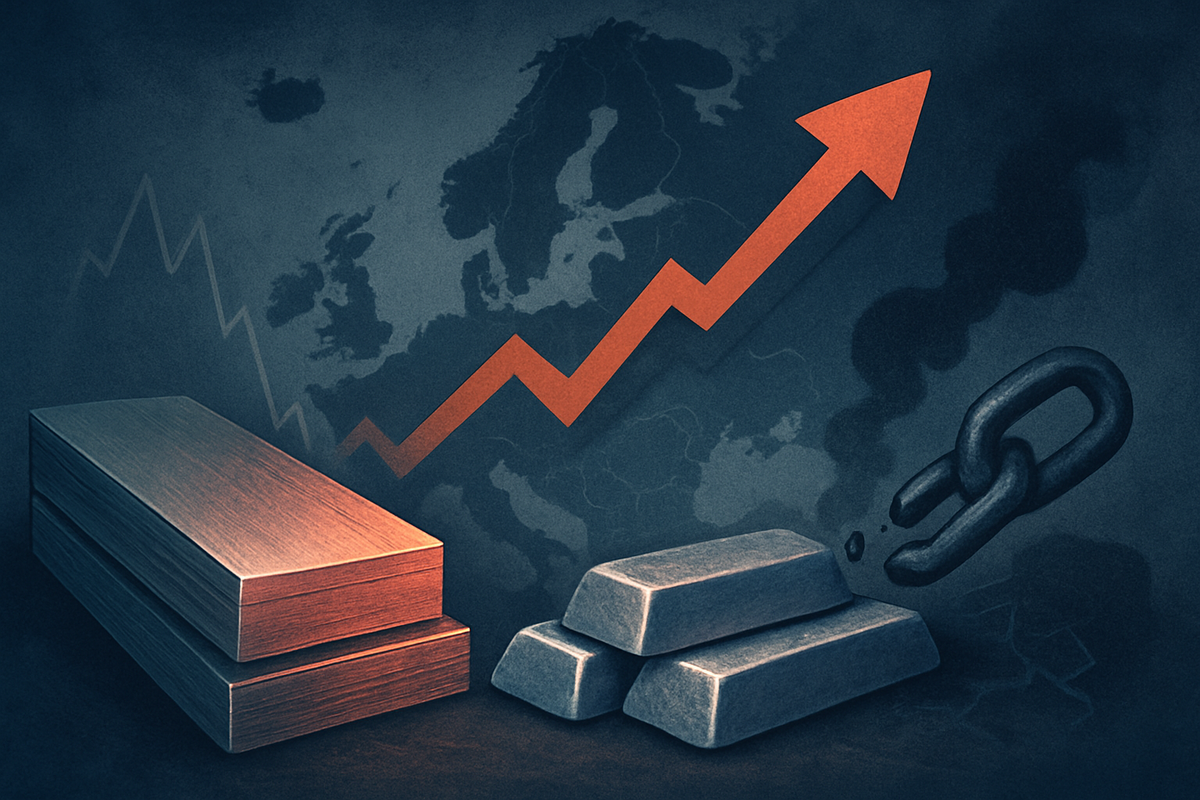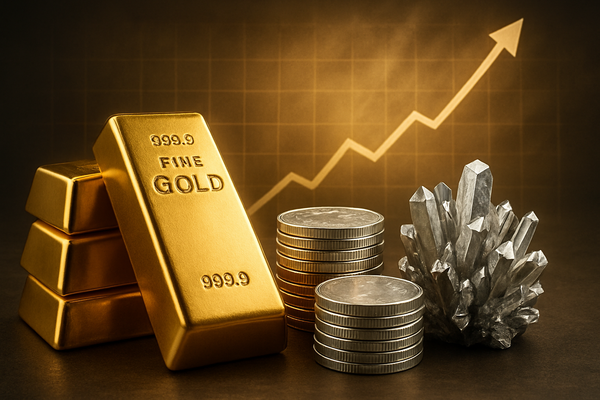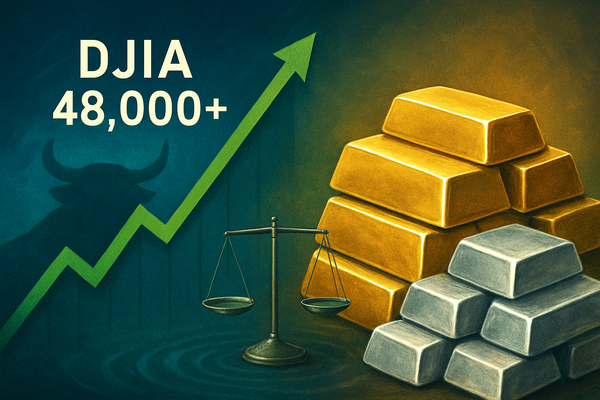European Aluminum Premium Soars to Nine-Month High of $324/Tonne Amid Supply Disruptions and CBAM Anticipation

The European aluminum market is currently grappling with a significant surge in the duty-paid premium, which has reached a staggering $324 per tonne as of November 2025, after touching a nine-month high of $330 per tonne earlier in the month. This sharp increase, a critical pricing component added to the London Metal Exchange (LME) price, signals escalating costs for industrial users across the continent and highlights underlying tensions in the region's aluminum supply chain.
The elevated premium reflects a complex interplay of factors, including unexpected production outages, strategic pre-emptive buying ahead of new carbon regulations, and persistent logistical challenges. For European manufacturers, from automotive to packaging, this translates directly into higher raw material costs, potentially impacting profitability, competitiveness, and ultimately, consumer prices. This development underscores Europe's vulnerability to global supply shocks and the profound impact of evolving trade and environmental policies on commodity markets.
Detailed Coverage: A Confluence of Factors Driving Up Costs
The current premium of $324 per tonne for European duty-paid aluminum, peaking at $330 per tonne on November 3, 2025, marks a significant nine-month high and represents a dramatic shift from earlier in the year. This ascent follows a period of notable volatility. After experiencing an increase in late 2023 and early 2024 due to Red Sea disruptions and favorable LME spreads, the premium saw a substantial decline in April 2025, dropping over 35% to approximately $230 per tonne. This dip was largely attributed to U.S. tariffs diverting aluminum away from the American market, leading to a temporary oversupply in European warehouses.
However, the latter half of 2025 saw a swift recovery. From August to September, the P1020 ingot premium levels began to climb again, driven by historically low inventory levels in Rotterdam, a reduction in duty-free imports from Canada, and concerns over supply from South32 (ASX: S32)'s Mozal smelter. The most recent surge, pushing the premium to its current levels, is primarily fueled by a critical supply disruption: an electrical equipment failure in late October 2025 at Iceland's Grundartangi smelter, a major EU supplier, which reduced its production capacity by two-thirds.
Adding to the supply-side pressures, European importers are actively "front-loading" aluminum purchases. This strategic buying spree is in anticipation of the European Union's Carbon Border Adjustment Mechanism (CBAM), set to fully implement carbon costs on imports from January 1, 2026. Companies are looking to secure supply and avoid future carbon-related expenses and administrative burdens associated with the new regulation. This pre-emptive demand, coupled with persistently elevated freight costs and limited duty-free supply options, has created a perfect storm, driving the premium to its current elevated state.
Corporate Impact: Winners and Losers in a Tight Market
The soaring European aluminum duty-paid premium creates a distinct bifurcation in the market, benefiting some players while posing significant challenges for others. European primary aluminum producers, such as Norsk Hydro (OSL: NHY) and Alcoa (NYSE: AA) with operations in the region, could potentially see improved margins on their sales, provided they can manage their own input costs, particularly energy. Companies like Norsk Hydro, which have integrated operations and a focus on renewable energy sources for their smelting, might be better positioned to capitalize on higher selling prices without being disproportionately affected by energy price volatility. Similarly, producers with existing long-term supply contracts that are less exposed to the spot premium might also benefit from the overall tightness in the market.
Conversely, the brunt of the high premium will be borne by European downstream manufacturers who rely heavily on imported aluminum as a raw material. Industries such as automotive, construction, and packaging will face significantly increased input costs. Companies like Arconic (NYSE: ARNC), a major producer of aluminum sheet, plate, and extrusions, or packaging giants like Ball Corporation (NYSE: BLL) and Crown Holdings (NYSE: CCK), which use vast quantities of aluminum for beverage cans, will likely see their cost of goods sold rise. This could lead to reduced profitability, pressure to pass costs onto consumers through higher product prices, or a squeeze on their competitive margins against non-European rivals.
Furthermore, smaller and medium-sized enterprises (SMEs) within these sectors may find it particularly challenging to absorb these increased costs, potentially leading to reduced production, delayed investments, or even business closures. The higher premium also impacts aluminum traders and distributors, who must navigate increased working capital requirements and heightened price risk, although those with strong hedging strategies and diverse sourcing options might mitigate some of these challenges.
Wider Significance: A Bellwether for European Industry and Policy
The surge in the European aluminum duty-paid premium is more than just a pricing anomaly; it serves as a critical bellwether for the broader European industrial landscape and the efficacy of its evolving trade and environmental policies. This event fits squarely into broader industry trends marked by increased geopolitical instability, ongoing supply chain fragilities, and the accelerating push towards decarbonization. Europe's reliance on aluminum imports, exacerbated by its high energy costs which limit domestic smelting capacity, makes it particularly vulnerable to global supply shocks and trade policy shifts.
The impending implementation of CBAM in January 2026 is a monumental policy shift that is already reshaping market dynamics. The current "front-loading" of imports demonstrates how regulatory changes, even before full enforcement, can create significant market distortions and price volatility. While CBAM aims to prevent carbon leakage and promote greener production globally, its immediate effect is contributing to higher costs for European industries. This event highlights the delicate balance between achieving environmental goals and maintaining industrial competitiveness, potentially pushing European manufacturers to re-evaluate their sourcing strategies and consider investments in more localized, lower-carbon production where feasible.
Historically, periods of high aluminum premiums have often coincided with global economic upturns, supply shortages, or significant trade disputes. The current situation shares elements with past supply-driven spikes, but the overlay of decarbonization policies like CBAM adds a new, structural dimension. This could have ripple effects on competitors outside Europe, potentially making European-produced goods less competitive globally if the higher raw material costs cannot be fully offset. It also pressures partners within the supply chain, from logistics providers facing increased demand and costs, to end-product consumers who will ultimately bear the higher prices.
What Comes Next: Navigating Volatility and Strategic Shifts
Looking ahead, the European aluminum market is likely to remain highly volatile in the short term. The immediate impact of the Grundartangi smelter outage will continue to be felt, and the strategic front-loading of imports ahead of CBAM will likely persist until the end of 2025. Once CBAM officially takes effect in January 2026, the market will enter a new phase, where the carbon cost component will be explicitly factored into import prices. This could further entrench higher premiums, especially for aluminum sourced from regions with high carbon footprints, unless global producers accelerate their decarbonization efforts.
In the long term, companies across the aluminum value chain will need to consider strategic pivots and adaptations. European manufacturers may explore diversifying their supply chains to reduce reliance on single regions or specific types of imports. There could also be increased pressure for investment in European primary aluminum production, contingent on competitive energy prices and supportive policy frameworks, to enhance regional self-sufficiency. Hedging strategies, such as utilizing CME Group's European Aluminum Duty-Paid Premium (Rotterdam) futures contracts, will become even more crucial for managing price risk.
Potential scenarios include a stabilization of the premium if supply disruptions ease and CBAM's impact is smoothly integrated, or a further escalation if geopolitical tensions worsen, energy costs spike, or global demand outstrips supply. Market opportunities may emerge for companies that can offer low-carbon aluminum or innovative recycling solutions, aligning with Europe's green agenda. Conversely, challenges will persist for those unable to adapt to the new cost structures and regulatory environment, potentially leading to consolidation or shifts in market share.
Comprehensive Wrap-up: A New Era for European Aluminum
The European aluminum duty-paid premium reaching $324 per tonne in November 2025 is a critical event, underscoring the profound shifts occurring in global commodity markets. It highlights the vulnerability of European industries to supply shocks, the direct financial implications of ambitious decarbonization policies like CBAM, and the persistent challenges posed by logistical bottlenecks and geopolitical uncertainties. The immediate takeaway is clear: the cost of aluminum for European end-users has significantly increased, impacting profitability and potentially consumer prices.
Moving forward, the market will be defined by its adaptation to the new realities of CBAM and the ongoing quest for supply chain resilience. While some European primary producers might find a temporary advantage, the overall trend points to higher operational costs for a vast array of manufacturing sectors. This situation demands a proactive approach from companies, focusing on robust hedging strategies, exploring diversified and potentially more localized sourcing, and investing in energy efficiency and decarbonization efforts to align with future regulatory demands.
Investors should closely watch several key indicators in the coming months: the stability of global energy prices, the effectiveness of CBAM implementation, the resolution of current supply disruptions (like the Grundartangi smelter outage), and any shifts in global aluminum demand and supply dynamics. The current premium is not merely a transient spike but signals a new, more complex era for the European aluminum market, where environmental policy, geopolitical risks, and economic fundamentals intertwine to shape commodity pricing.
This content is intended for informational purposes only and is not financial advice



